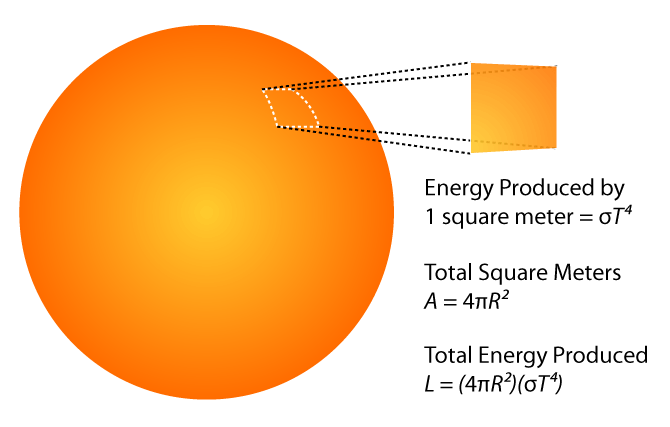L = 4πR2σT4 = 4π(x10 m)2σ( K)4 = x10 J/s
Solar Units
L = R2T4 = ( R
 )2( T
)2( T )4
= L
)4
= L
 )2( T
)2( T )4
= L
)4
= L
After reading the background information and working through all exercises in the simulator a student should:
Luminosity is defined as the total energy a star releases each second. It is normally given in units of joules per second or watts.
The luminosity of a star depends on both its surface temperature and its size. Luminosity is the product of 1) the Stefan-Boltzmann Law describing how much energy is radiated by each square meter of a star in 1 second and 2) the star's surface area.

The luminosity of the sun is 3.8 x 1026 J/s. Other stars have a very wide range of luminosities: there are large hot stars that are 100,000 times as luminous as the sun and there are small, cool stars 100,000 times less luminous than the sun.
This astronomy �Little Big Picture� was programmed by REU student Nick Robe. It is an early effort of the UNL Astronomy Education Group to provide materials for mobile devices. More astronomy teaching materials can be found on the web at astro.unl.edu.
This simulation makes use of the Dojo tooklit available at dojotoolkit.org.
Background image by P. van de Haar at Wide field astrophotography.